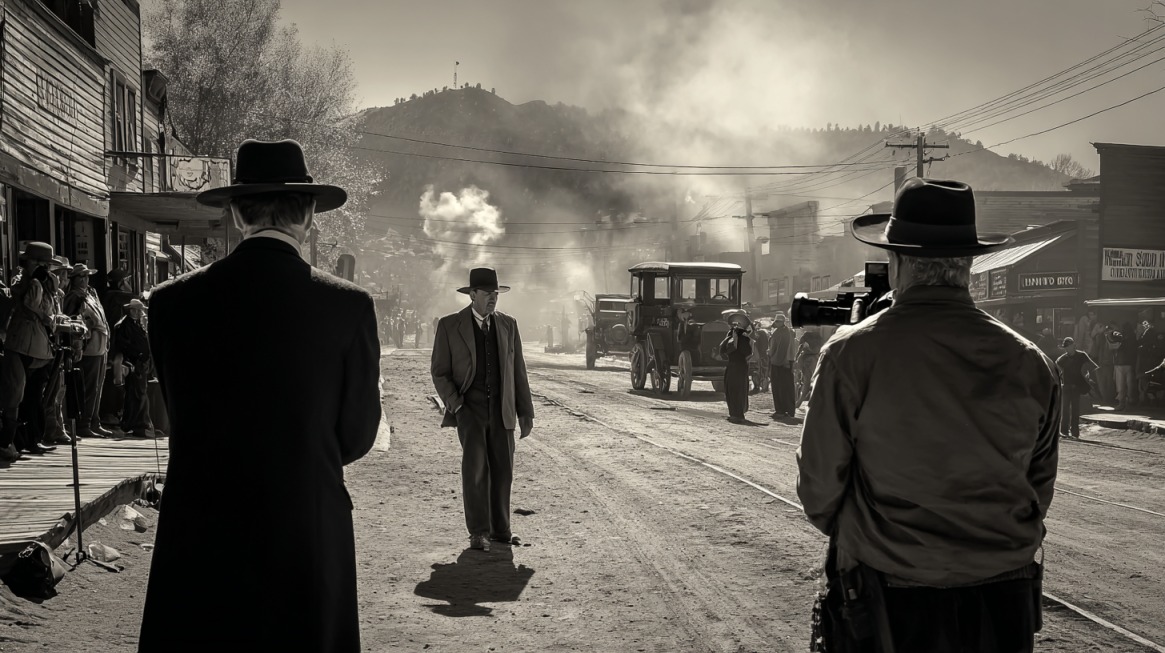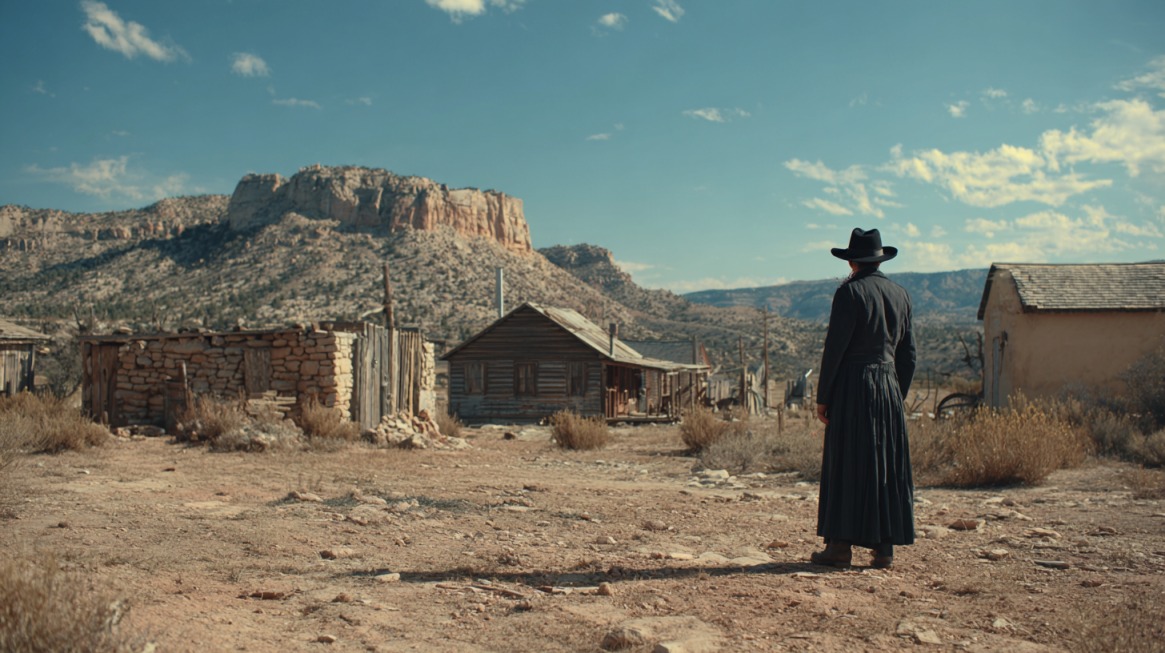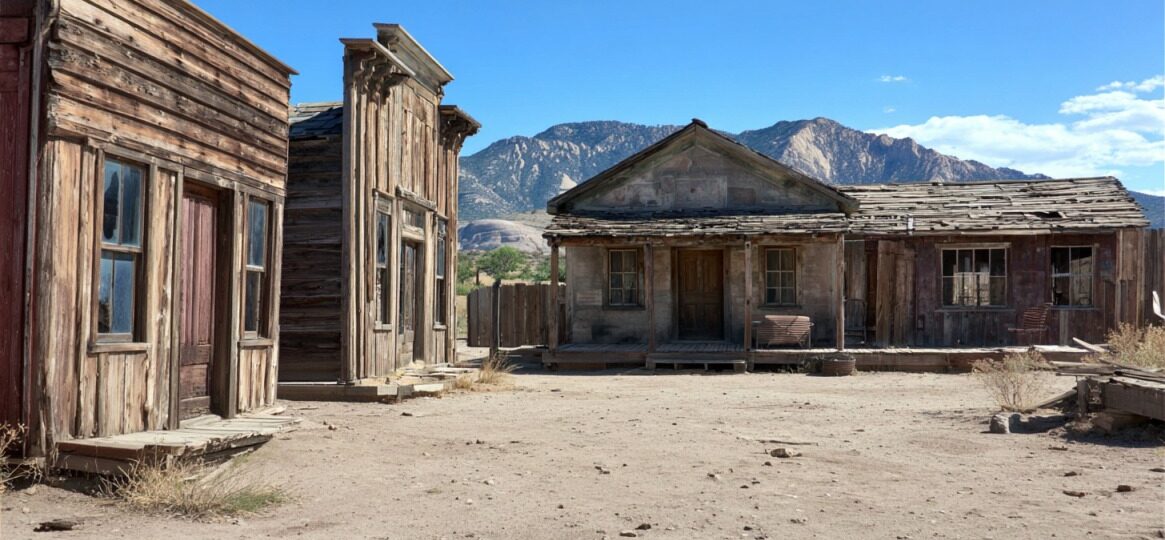Gunsmoke remains one of the longest-running television Westerns, shaping an era of American entertainment.
Abandoned film sets have a peculiar magnetism, offering glimpses into how Hollywood once constructed its illusions.
Among the forgotten backdrops, Utah holds a special place with remnants of Gunsmoke still lingering in its rugged desert scenery, evoking the spirit of the Old West.
Let’s discuss it.
A Historic Western Filming Site in Johnson Canyon
Built just three miles outside Kanab, the Gunsmoke Movie Set recreates Dodge City, Kansas, as seen in the legendary television series that aired between 1955 and 1975.
With 635 episodes, Gunsmoke remains one of the longest-running prime-time shows in U.S. history. Many of its outdoor scenes were filmed in Johnson Canyon, where the replica set still remains, visible but no longer accessible due to disrepair.
Known as perhaps the largest set built in the Kanab area, it continues to draw interest from those fascinated by classic Western productions. Visitors often pair their viewing with a self-guided tour of Johnson Canyon, adding more context to the region’s film history.
The Filming Locations Behind the Magic
Behind every convincing Western scene lies a careful choice of filming locations. Gunsmoke depended not only on its cast and scripts but also on the settings that brought Dodge City to life.
Early seasons relied on established ranches and studio lots, while later episodes expanded into new grounds that added depth to the show’s visual storytelling.
Each site carried its own personality, becoming an integral part of the series’ lasting appeal.
Melody Ranch
Melody Ranch became the stage where early Gunsmoke episodes came alive. Its saloons, clapboard buildings, and dirt streets gave Dodge City an air of authenticity that transported viewers into the nineteenth century.
Production teams benefited from the ranch’s existing structures, saving both time and money while achieving an atmosphere that audiences readily believed.
Famous for its long history of Western productions, Melody Ranch was previously used in classic films before television adopted it.
Its design allowed directors to frame scenes with sweeping streets and recognizable facades, immersing audiences in Dodge City’s everyday life.
Saloon interiors and frontier storefronts became iconic backdrops for confrontations, personal drama, and moments of humor.
The use of Melody Ranch in Gunsmoke helped cement its reputation as a place where Western history met television storytelling.
Paramount Ranch
View this post on Instagram
As production needs grew, Paramount Ranch provided flexibility with its expansive grounds and rustic architecture.
Scenes requiring wider exteriors or a change in visual tone found their place here. For decades, the ranch served not only Gunsmoke but also countless other productions.
Tragedy hit in 2018 when a massive wildfire swept through, leaving the site nearly unrecognizable. Many long-time fans mourned its loss, as it held sentimental value tied to multiple eras of film and television.
Today, restoration projects aim to rebuild parts of the ranch, ensuring its place in Hollywood’s history remains intact.
Archival footage and photographs preserve memories of Gunsmoke’s use of the ranch, reminding audiences of how settings became characters themselves in Western storytelling.
Wildwood & Thousand Oaks, CA
@yosabrinamarie Such a pretty view Paradise Falls. Wildwood Regional Park in Thousand Oaks. #nature #hike #thingstodo #thousandoakscalifornia #losangeles #la #naturewalk #lahike #onewithnature #waterfall #fyp #getout #explore #explorecalifornia #explorela #pretty #outdoor #adventure ♬ rumination – BAANDIT!
Wildwood and Thousand Oaks served as additional locations for Gunsmoke, providing open fields and adaptable backdrops.
Archival images collected by Calisphere capture candid moments on these sets. Crew members can be seen adjusting props, actors rehearsing between takes, and guest stars preparing for one-episode roles.
Jack Lambert and other character actors are visible in these photographs, showing the variety of talent involved.
Behind-the-scenes glimpses highlight the teamwork required to create seamless productions.
The presence of ordinary details, such as wardrobe adjustments and prop setups, emphasizes the collaborative nature of television during the 1950s and 1960s.
These preserved images ensure that future generations can appreciate the labor and creativity behind Gunsmoke’s enduring success.
The Utah Connection – Gunsmoke in Kanab

Kanab, Utah, earned its title of “Little Hollywood” for good reason. Dozens of productions, including Gunsmoke, relied on its dramatic red cliffs and desert valleys. Producers seeking an authentic frontier look turned to Kanab, where nature provided grandeur that sound stages could not replicate.
Later episodes of Gunsmoke benefited greatly from the rugged terrain, which created an air of realism during outdoor scenes. Viewers accustomed to indoor saloons and dusty California ranches were treated to sweeping views of Utah’s wilderness.
Extras drawn from the local population further grounded the show’s authenticity, as townsfolk often appeared in background roles.
- Red-rock canyons and open plains shaped the atmosphere of later episodes.
- The town became a hub for Westerns, hosting productions such as The Lone Ranger and Stagecoach.
- Its community embraced the film industry, welcoming crews and adopting the nickname “Little Hollywood.”
Kanab’s ongoing reputation continues to attract fans who wish to walk the same paths once used in Gunsmoke, creating a living link between television history and modern tourism.
The Abandoned Set – A Ghost Town of Television History
Venturing into the remains of Gunsmoke’s Utah set feels like stepping into a forgotten dream. Wooden storefronts lean precariously, weathered by time and desert winds. Dust settles where once there were bustling crews, costumes, and horses clattering through staged streets.
Visitors often describe a heavy silence, broken only by gusts of wind passing through broken windows. Every crumbling wall seems to whisper echoes of a bygone television era.
Though many of the facades are beyond repair, the remnants retain symbolic power, embodying the impermanence of entertainment and the resilience of cultural memory.
- Wooden facades remain recognizable despite decay.
- Desert winds add an eerie atmosphere, giving the area a ghost-town quality.
- Remnants of props and set construction evoke images of a once-thriving production site.
What remains in Utah is not just decayed wood but also a reminder of how much effort once went into creating believable stories for millions of viewers. The abandoned Gunsmoke set symbolizes the fragile yet enduring legacy of television history left behind in physical form.

The Legacy of Gunsmoke
Gunsmoke ran on CBS for an impressive twenty years, holding a place in households across America. Few shows maintained such longevity, and even fewer achieved the same level of cultural resonance.
At its center stood Sheriff Matt Dillon, played by James Arness, a character embodying both authority and compassion. His presence on-screen gave audiences a figure of stability in a turbulent time of television history.
Alongside him, Chester Goode, portrayed by Dennis Weaver, offered levity and loyalty, creating a balance that made the show feel authentic and human.
Episodes often tackled moral dilemmas that reflected broader societal conversations, addressing topics such as justice, fairness, loyalty, and survival in uncertain times.
While some stories revolved around shootouts and outlaws, others dealt with quiet moments of struggle, reinforcing that life on the frontier was not just about gunfights but also about endurance and community bonds.
Gunsmoke’s success shaped future Westerns, setting standards for tone, pacing, and character-driven storytelling.
- The Western has been a mainstay of American television for decades.
- Introducing multi-dimensional characters who grew with the series.
- Influencing later shows like Bonanza, Rawhide, and even modern interpretations of frontier dramas.
Conversations about American television history often circle back to Gunsmoke as a defining force in shaping how audiences view the Old West through dramatized yet emotionally grounded stories.
Summary
Physical traces of Gunsmoke scattered across Utah’s desert continue to stir curiosity. Crumbling sets speak not only of decay but also of endurance, telling a silent story about the cycles of culture and media.
Abandoned movie sites possess an unusual beauty, reminding us how storytelling leaves its mark on both people and places.
Visitors who seek out these remnants discover a hidden connection to a show that once defined the Western genre.

